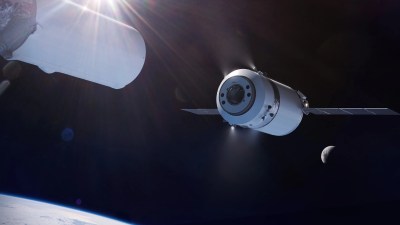Under the current Administration, NASA has been tasked with returning American astronauts to the Moon as quickly as possible. The Artemis program would launch a crewed mission to our nearest celestial neighbor as soon as 2024, and establish a system for sustainable exploration and habitation by 2028. It’s an extremely aggressive timeline, to put it mildly.
To have any chance of meeting these goals, NASA will have to enlist the help of not only its international partners, but private industry. There simply isn’t enough time for the agency to design, build, and test all of the hardware that will eventually be required for any sort of sustained presence on or around the Moon. By awarding a series of contracts, NASA plans to offload some of the logistical components of the Artemis program to qualified companies and agencies.
For anyone who’s been following the New Space race these last few years, it should come as no surprise to hear that SpaceX has already been awarded one of these lucrative logistics contracts. They’ve been selected as the first commercial provider for cargo deliveries to Gateway, a small space station that NASA intendeds to operate in lunar orbit. Considering SpaceX already has a contract to resupply the International Space Station, they were the ideal candidate to offer similar services for a future lunar outpost.
But that certainly doesn’t mean it will be easy. The so-called “Gateway Logistics Services” contract stipulates that providers must be able to deliver at least 3,400 kilograms (7,500 pounds) of pressurized cargo and 1,000 kilograms (2,200 pounds) of unpressurized cargo to lunar orbit. That’s beyond the capabilities of SpaceX’s Dragon spacecraft, which was only designed to service low Earth orbit.
To complete this new mission, the company is proposing a new vehicle they’re calling the Dragon XL that would ride to orbit on the Falcon Heavy booster. But even for this New Space darling, there’s not a lot of time to design, test, and build a brand-new spacecraft. To get the Dragon XL flying as quickly as possible, SpaceX is going to need to strip the craft down to the bare minimum.
Classically Inspired
So far we only have a single artist’s rendering of the Dragon XL to go by, but that’s already enough to learn a lot about how SpaceX is approaching this new lunar cargo craft. For one thing, it’s immediately obvious that the design is vastly different from either the original Dragon or its Crew Dragon counterpart. If anything, it looks far closer to Japan’s H-II Transfer Vehicle (HTV) or Northrop Grumman’s Cygnus.
Which of course makes perfect sense. Like the HTV and Cygnus, Dragon XL isn’t designed to fly in the atmosphere. Traditional space capsules get their conical shape from the fact that they’re mounted at the tip of the booster on ascent, and essentially act as the rocket’s nosecone. But Dragon XL will be riding to space inside the cargo fairing of the Falcon Heavy, which …read more
Source:: Hackaday

